The Art of Concealment
By recent estimate, there are at least 500,000 fauna species in Costa Rica, of which 493,000 are invertebrates (insects, spiders, molluscs, crustaceans, crabs). By comparison the entire US has fewer than one third the number of invertebrate species but 300X the land size of tiny Costa Rica — an effective difference of 1000 fold.
Most visitors to Nectandra Reserve have heard about the extraordinarily high biodiversity of the wet montane cloud forest. On arrival, they expect to see a tropical jungle, teeming with animals and hopping with insects, in full view as in a zoo without cages. Yet, all they see is the lush, thick, tangled, green vegetation behind the mist. They see few things with legs or wings, certainly not in a number or density that would impress.
Puzzled, my visitors would politely ask “Do you have any animals?” As their guide for the day, I never get tired of seeing their eyes gradually widen in the course of our interpretive hike as they slowly realize the beauty of nature’s astounding subtlety. It isn’t the quantity or furriness, but the compelling impact of the sightings that will convince them there is more to it than meets the eyes. By the time they leave, most visitors can grasp the phenomenal biodiversity with minimal help from me. Yes, the animals are here, thousands of them. Many are in plain view, but only if our mind is prepared for the encounter. One such example is captured in the photo below of a small fallen branch on the ground.
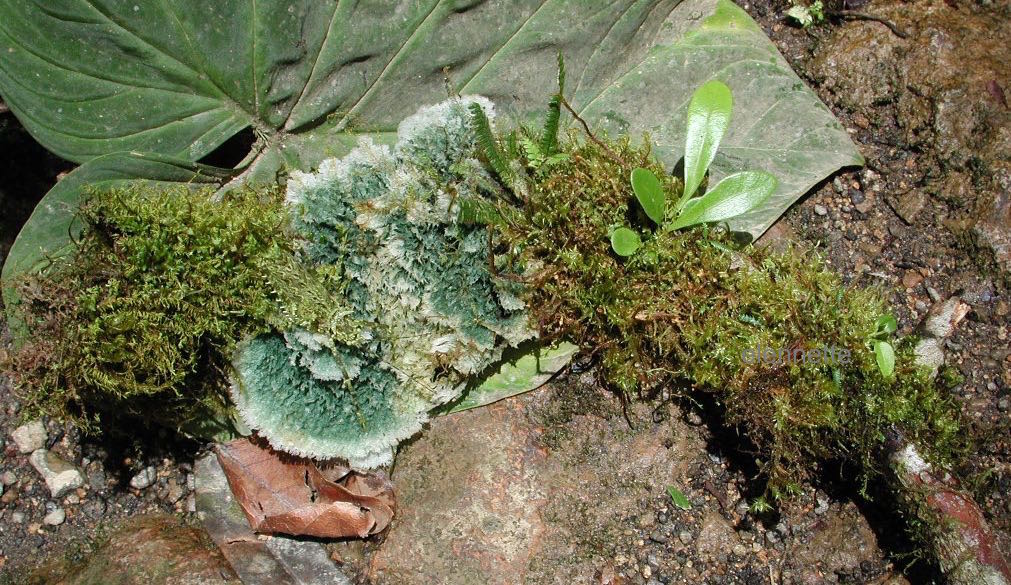
With so many animal species living in the same space, they become interdependent in a most efficient but cruel way possible. Every species is food for other species. To survive, every prey’s overpowering instinct is to hide, physically or visually, or both. One most obvious way to conceal is to stay in the dark, and out of sight. This is true for the smallest to the largest, from gnats to jaguar. That explains why the majority of the invertebrates, reptiles, amphibians and mammals are nocturnal. For many of the diurnal organisms, invisibility through camouflage — the ability to blend in the surroundings — is vital to survival.
Let’s go back to the photo above. Look again with these three clues: 1) It’s in the left half of the photo, 2) It’s in a patch of leafy plant, 3) It’s green with 6 legs and two long antennae. Still not visible? If not, inspect the blow-up below of the same photo. A katydid (Haemodiasma spp) is now revealed, perfectly camouflaged in the patch of liverwort, a cousin of the mosses. The next photo is an even closer shot of the head.
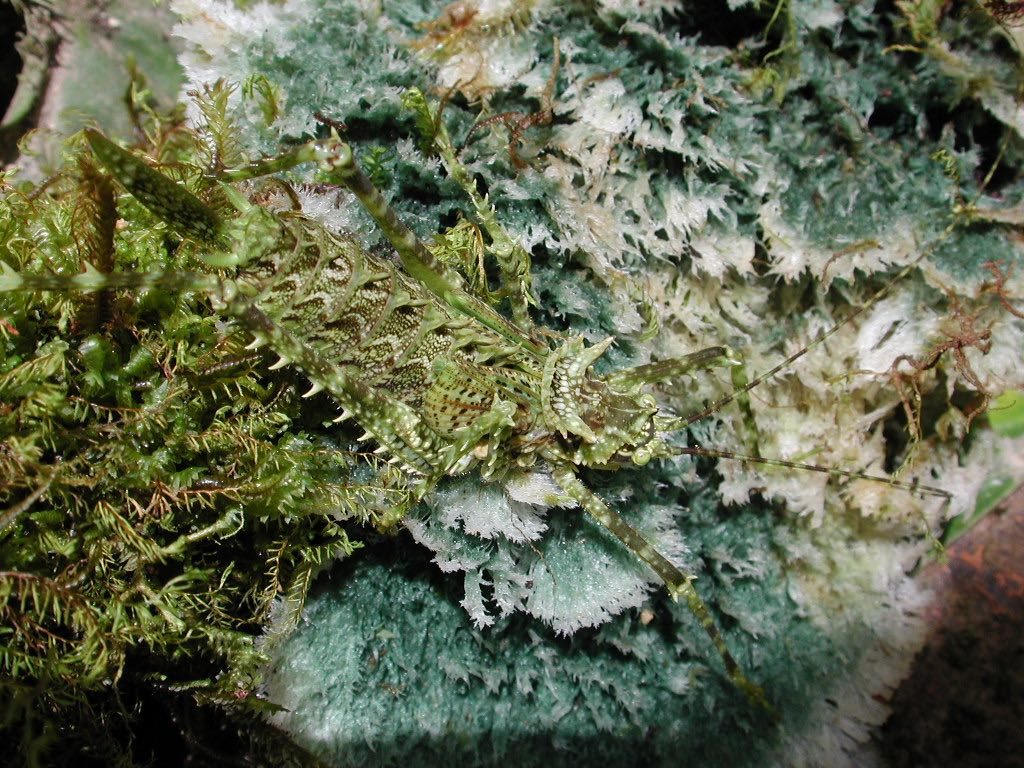
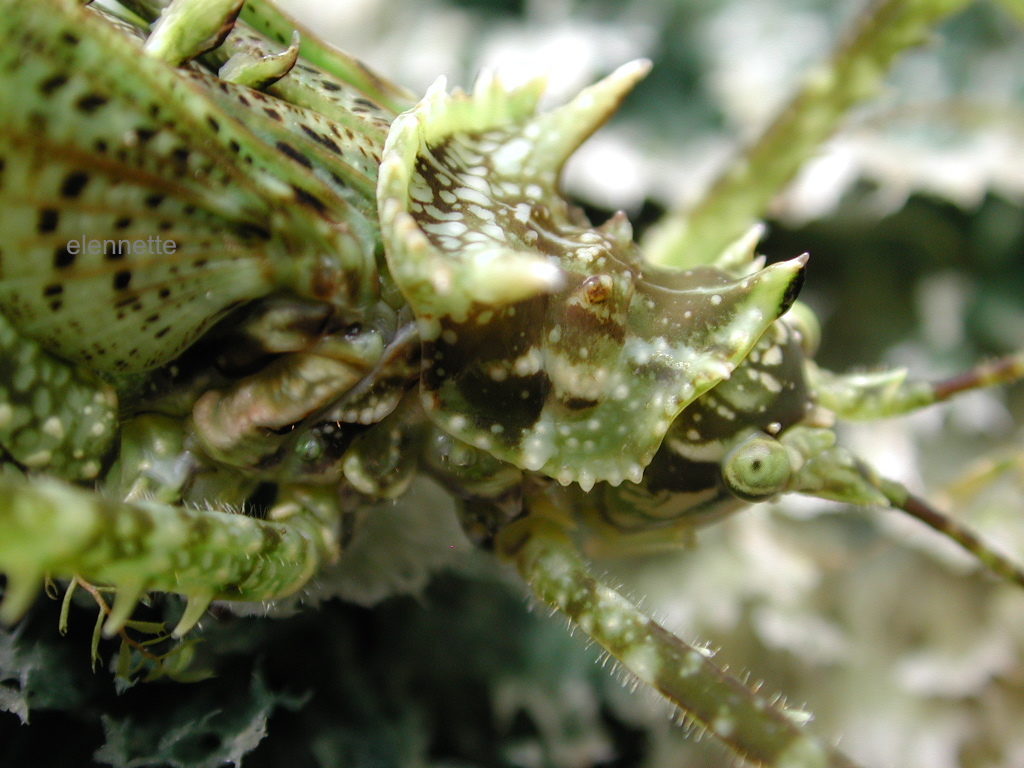
Not to be outdone, other members of this Tettigoniidae family (katydids, grasshoppers and crickets) are equally remarkable in the myriad of ways they can blend into their environment. Take this close up photo of a dry leaf for example. Note the pigmentation, the areas of discoloration, the flecks of tissue damage and randomly attached green vegetation. How faithfully would you guess a katydid can imitate this leaf ?
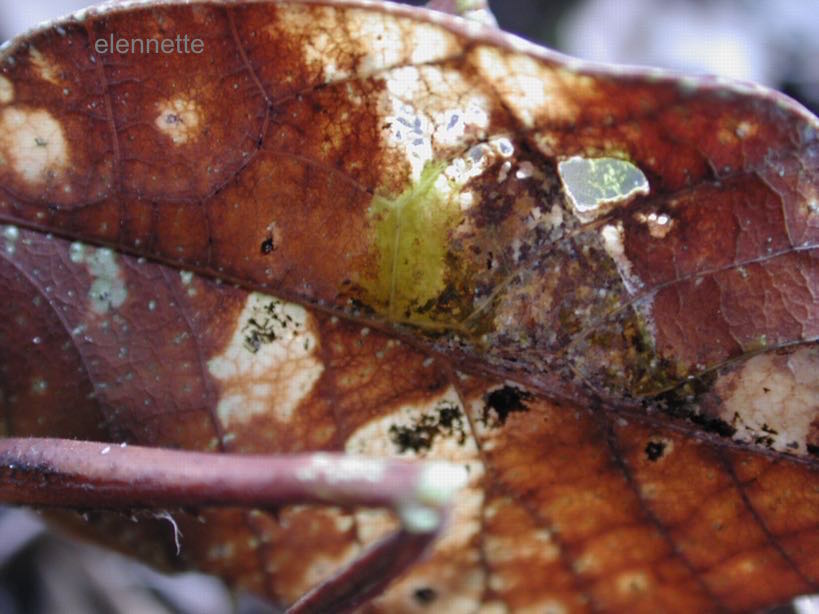
The answer is — absolutely perfectly — because the above “dried leaf” is actually a cropped view of the leaf katydid below.
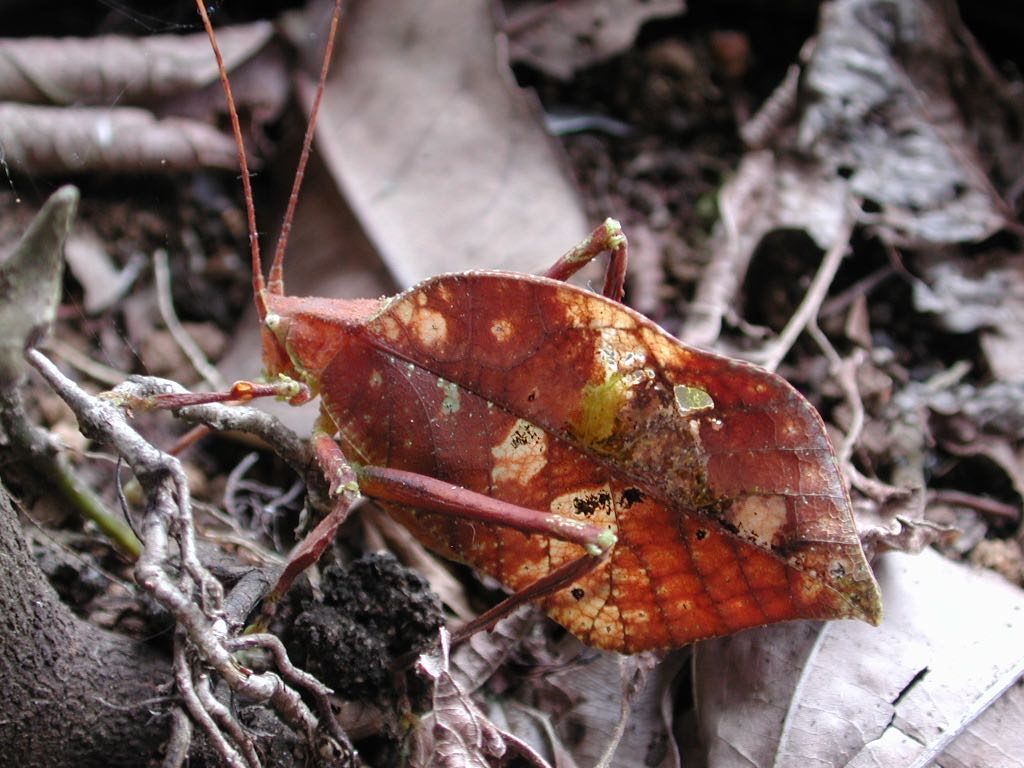
Here is another example of the high art of concealment of another species of katydid. The green leaf katydid on the left is almost perfectly matched to the begonia leaf on the right.
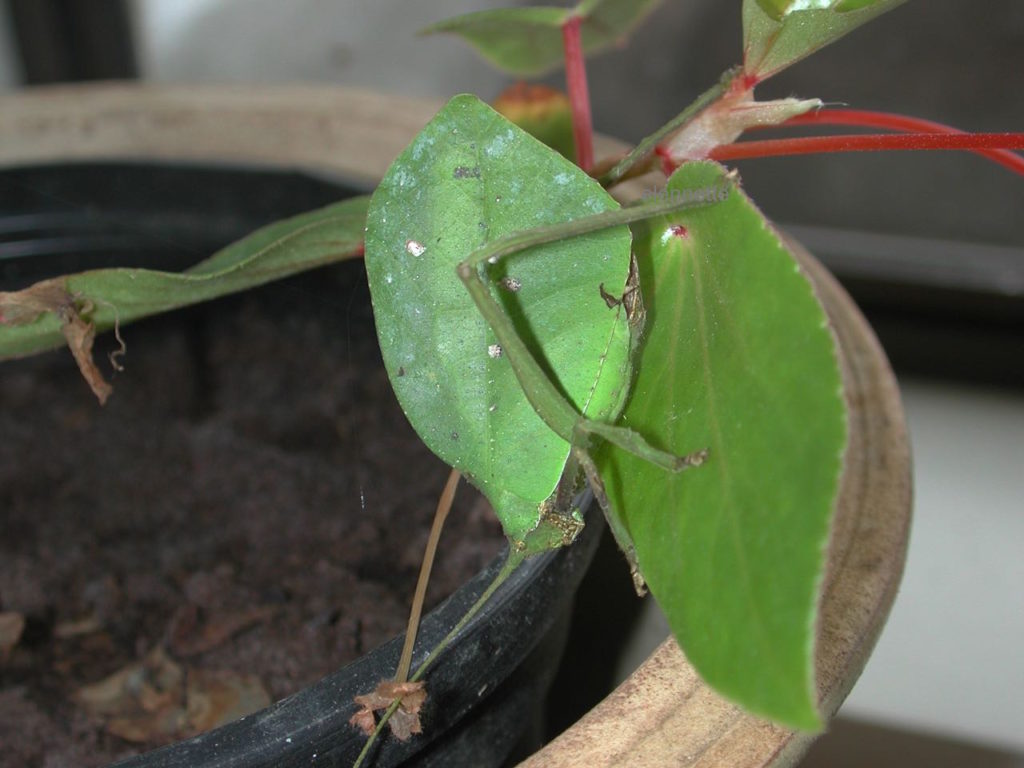
The fierce competition for food sources in the wild tropics means every organic and proteinaceous scrap is consumed almost instantly. Nothing is left to waste. Carcasses are rare finds. The next photo is of such a rare item — a pair of wings from a dismembered katydid.
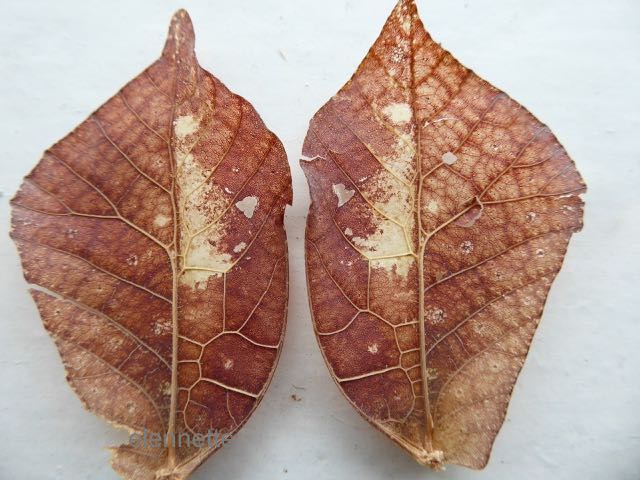
At first glance, when found on the ground, they were indistinguishable from the other dried leaves nearby. On inspection, however, that they were of two perfectly mirrored “leaves”, including discoloration and holes, left no doubt they were not of natural leaves. The symmetry was too perfect, the ribbing and veining (see photo below), even down to every blemish. Had we found only one wing, only a biochemical or DNA test could confirm its insect origin.
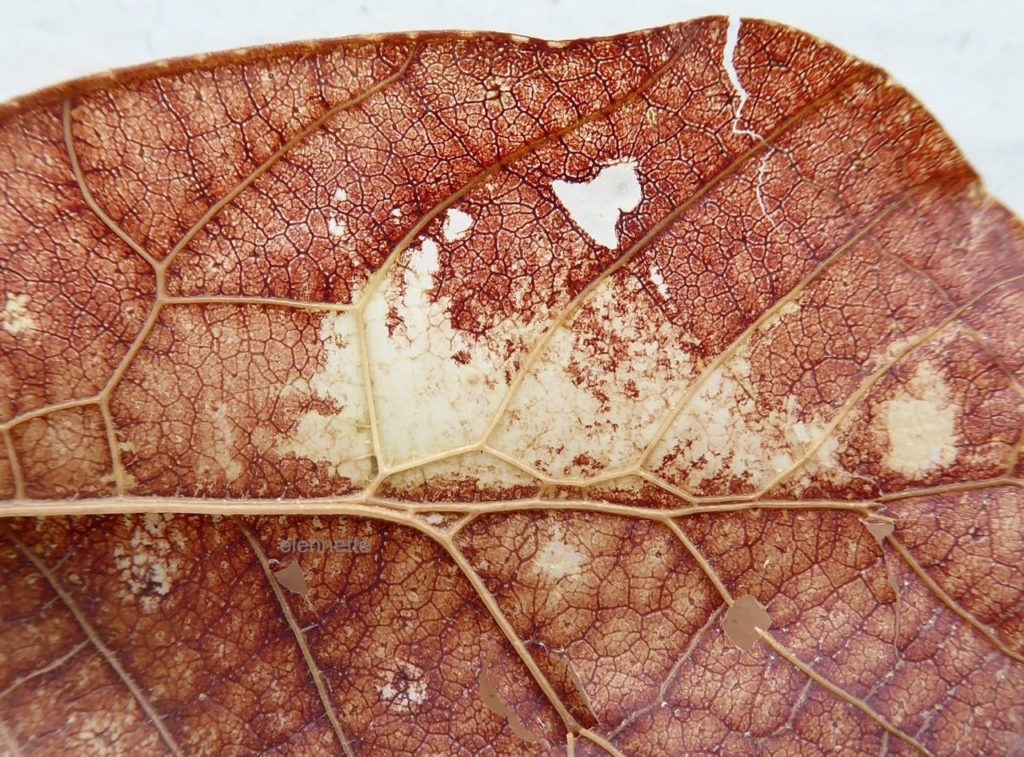
As perfect as the cryptic coloration of the katydids (at least to the human eyes), one false move is all it takes to become someone’s meal. Witness, in the photo below, the unfortunate katydid that came too close to the spider web of the orb weaver Eriophora fuliginea. In spite of the size difference, the larger katydid was no match for the stickiness and strength of multi-stranded spider silk. It was all over for the katydid within mere seconds.
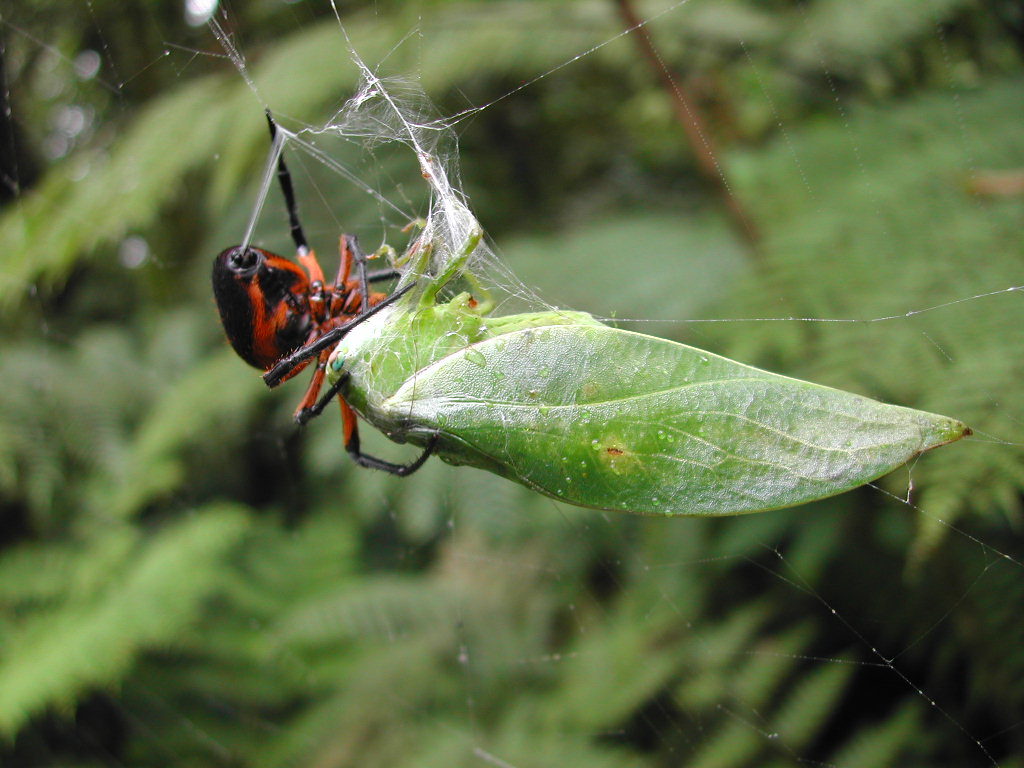
Concealment as a defense tactic comes in as many forms as there are organisms. Nature is an infinitely large repository of supremely clever solutions for as many problems. It behooves us humans to learn from them.
Please join us at Serendips.net next month for more adventures and examples.